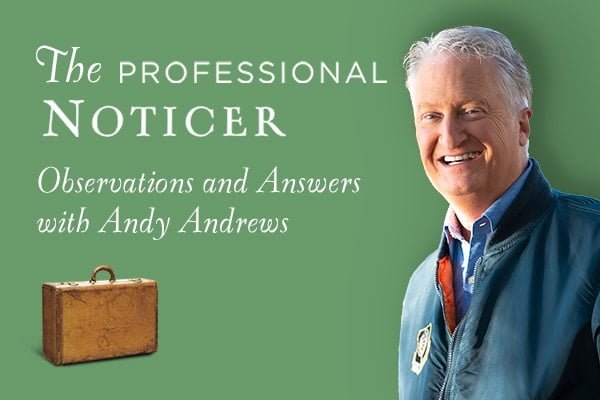Every year, about this time, I field a handful of inquiries from a head football coach or his staff. Often, someone else talked to them about me months earlier and for whatever reason at the time, no one reached out. Now, however, if the season is not going as they had hoped it might, some coaches are grasping at straws—of which I am one.
My answer to a call this time of year is probably not what you’d expect, for no matter how attractive the client or their offer, I am careful not to accept an opportunity of this type that I am not certain will succeed.
After the games last Saturday, when we received communication from a coach, I replied in my usual way. As I was writing, it occurred to me that you might want to see what I wrote. So, my answer is below.
Names and references have been removed, of course, but this was my reply to a major, traditional power in college football…
Coach…
First, it’s great to hear from you and I know you are expending every bit of mental and physical energy you have in order to turn this situation around. Your offer is very interesting and I appreciate you thinking of me in this situation. You also ask a good question about whether or not I can dramatically affect a team in mid-year…
I have found that it is tough to shift an entrenched culture during an enemy attack (and that’s what mid-season is akin to for you and your guys). When the bombs are falling, soldiers—and football players—will respond in the direction of their most significant training.
Incidentally—and this is something you’ll find interesting to observe—that is true even if the direction in which they move is not in the direction a coach believes he has trained them! In those cases, there is a level of “significant training” that has been done at a player’s cultural level that can easily override training that has been done on the surface.
It might interest you to know that I have pushed this point to more than one coach only to have them say, “I think our team culture is fine.”
To which I would like to respond, “Of course, you think it’s fine. The players and assistants want to please you. And I’m not saying your culture is not ‘fine’. True, I am curious if you are really after ‘fine’ as a cultural description…
“But the critical factor is whether or not The Coach holds a complete understanding of culture’s creation and the long term effects it has. Think about it this way: The player’s parents and home town had him for 17 years, you’ve had him a year and a half. What cultural reference do you think he will grasp for when challenges suddenly confront him?”
For insight to this, reread Chapter 13 (the one about CHANGE) in my book The Little Things.
When the enemy successfully attacks, what we truly believe about ourselves at the deepest level controls the actions we take. If we are part of a team, what we truly believe about ourselves determines how those actions are able to be implemented by our leaders.
So…midseason is not the best unless I have already had contact with them, which obviously, I have not. But let’s keep in touch. It would be good to revisit the thought process after the season is over.
One last thing to keep in mind…my value to you is greatest when I work with you and your coaches toward a specific result you desire in the behavior (on field and off) of the players. Except for occasionally speaking at a team meeting, I rarely work with the player’s themselves. In most cases, I work with the coaches; coaches deal with the players.
As you know, kickers seem to keep to themselves at practice. Unless the coach has actually been a kicker—and I don’t know of one who has—there is less understanding of how the game time performance of a kicker is actually enhanced or degraded during the week compared to the “been there/done that” coaching the players at other positions receive every day.
Kickers at the college level and above are like PGA and LPGA tour players, MLB pitchers, and Olympic shooters….
It should be noted that they are not like me. There are probably more than twenty-five reasons I might hit a golf ball into the lake and I couldn’t throw a 90mph fastball for ten million dollars (like they really do!)
Kickers at the FBS college level and athletes at the Olympic and professional level are an easy comparison. Their particular specialty involves a solitary action and they already possess the talent and have already developed the skill needed to succeed! Further, if the kicker (golfer, pitcher, shooter) who has demonstrated the ability to perform physically and subsequently runs into an issue with their results, the cause is rarely physical.
Several years ago, after retiring as an active tour professional, Nancy Lopez was named captain of America’s Solheim Cup team.
As I’m sure you are aware, the position is equal parts honor and responsibility.
Early on, Nancy was in the process of making her “captain’s picks” to round out the team. The first ten players are qualified by their own performance during the season, but the captain’s picks—just as in Ryder Cup for the PGA—are totally at the mercy of the decision made by the team leader. And there are only two.
One day, with the deadline approaching for Nancy to name the picks, I was in the golf cart with her as she eased through the practice round of a major LPGA event. We rode right down the fairways, stopping often to talk with the lady professionals. Nancy visited with the pros who had already made the team—Julie Inkster, Meg Mallon, Natalie Gulbis, Paula Creamer, and others whose names you’d probably recognize—and she spent time with some who knew they were “on the bubble” for a captain’s pick.
We stopped short of one particular pro and watched quietly as she approached her ball. Sensing us behind her, she turned and smiled. “Don’t mind us,” Nancy said. “Hit it.”

“An eight,” she answered and held it toward us as if to prove it. Nancy nodded. Then the lady pro turned, advanced to the ball and used her 8-iron from 140 yards to knock the ball onto the green. Where it stopped within a foot of the hole.
Personally, I was stunned at the shot and not surprised when Nancy complimented her on it. But a few minutes later, as we pulled away, Nancy grimaced, leaned toward me, and quietly said…“I just love her, but I can’t choose her.” When I asked why, she responded…
“Because she can’t play on Sunday.”
“What do you mean by that?” I asked.
She stopped the cart under a tree and thought for a moment. Then, Nancy Lopez—the most famous player in the history of women’s golf—explained it in a way I have never forgotten.
“Andy,” she began, “there are about 200 active players who participate in LPGA events each year and every single one of them can hit every shot there is. But only a few of them can hit that shot on a Sunday—the last day of a tournament—when the pressure is on.
So, to paraphrase Nancy—a lady who is still one of my favorite human beings on the planet—What a kicker thinks, how the thought is processed, when they think it, and how the thought arrives… is often the difference between “right down the middle” or “just a little bit outside”.
In my experience, the athlete who is part of the team, but performs his specialty individually, can fairly easily be adjusted in mid-season with a great degree of success. The team as a whole, however, is a larger process.
Let me know if I can help!
Andy











